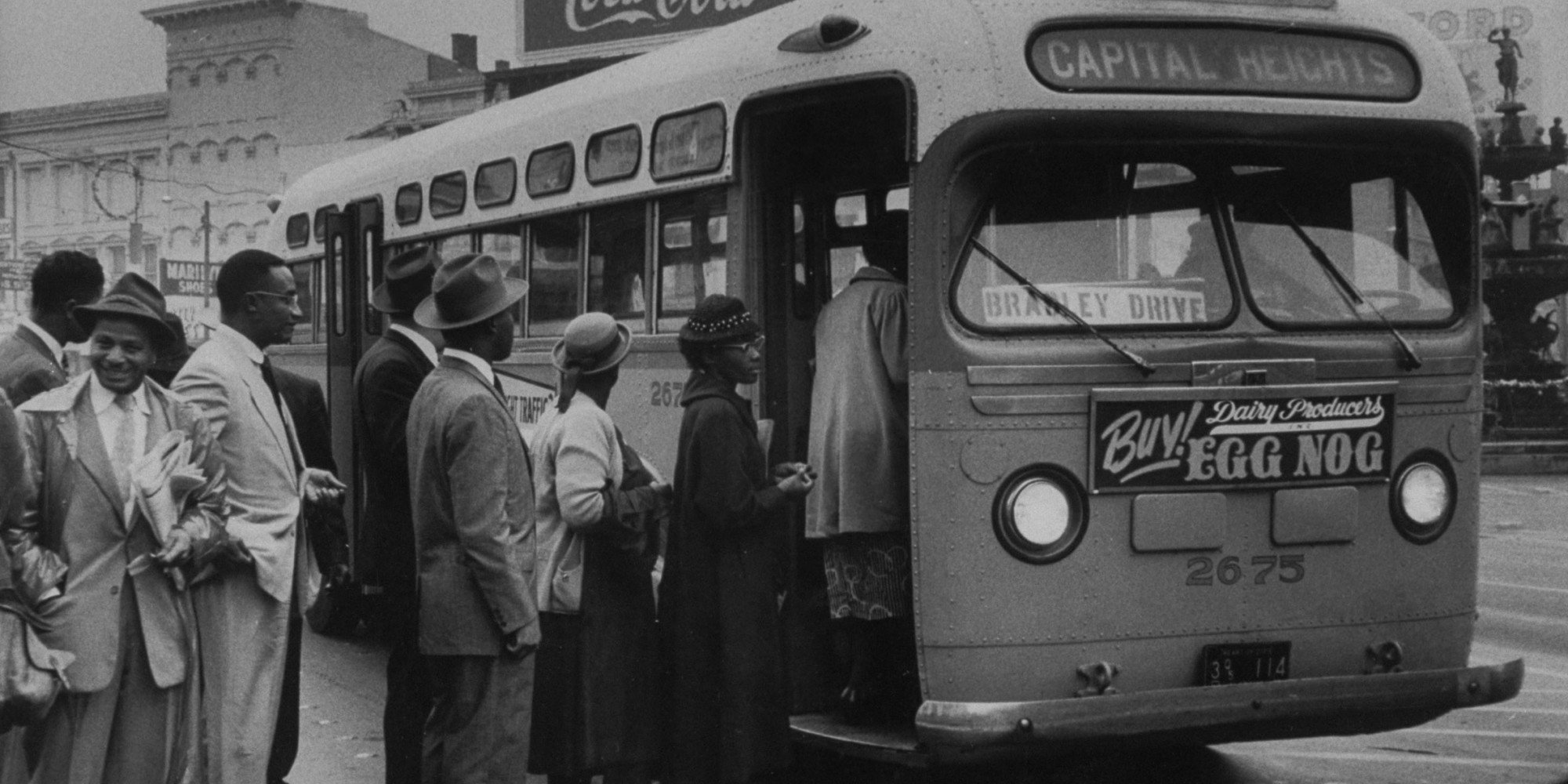Rosa Parks: A Legacy of Strength and Courage
02/01/2023 13:20
On December 1, 1955, in Montgomery Alabama, a young woman named Rosa Parks was arrested. She was arrested for refusing to give up her designated ‘colored’ seat to a white passenger. A few days later, on the day of Rosa Park’s trial, the African American community in Mongomery organized a boycott of the city’s buses in protest. People took cabs, walked to work, and even stayed home from work altogether.
Parks was found guilty and was fined $10 plus a $4 court fee. But that wasn’t the most significant event of that day, despite the 500+ people that had gathered outside the court in support of Rosa. The arrest and trial started a movement so significant that it changed the lives of many African Americans and continues to do so today.
Who was Rosa Parks?
Rosa McCauley was the daughter of a former slave family that lived in Alabama and experienced racial discrimination and activism for racial equality throughout her childhood. She was educated first by her mother before going to a segregated school in Pine Level, Alabama and later to the Industrial School for Girls in Montgomery at the age of 11. But while attending a secondary school, Rosa left to look after her sick mother and grandmother back in Pine Level.
But a few years later, having married Raymond Parks, Rosa got a job at a shirt factory in Montgomery and returned to school, fully supported by her husband. Once she graduated high school, she became involved in civil rights, joining her husband as a member of the NAACP (National Association for the Advancement of Colored People) and served as its youth leader and secretary to the NAACP President until 1957.
:max_bytes(150000):strip_icc()/Rosa-Parks-2107541x1-56aa275a5f9b58b7d00107d7.jpg)
Rosa Parks was an American icon and a powerful symbol of resistance against the systemic racism of her time.
Why was Rosa Parks arrested?
Rosa was, by 1955, working in a department store in Montgomery as a seamstress. After work, she got on the Cleveland Avenue bus to go home, sitting in the first of several rows set aside for colored passengers.
At the time, the Montgomery City Code meant that public transport in the city was segregated, and bus drivers were given the “powers of a police officer of the city while in actual charge of any bus to carry out the provisions of the code.” Generally, bus drivers assigned a row of seats for African Americans in the middle of the bus. Indeed, colored passengers had to get on the front of the bus to pay their fare, then get off the bus and back on via the rear door.
During the journey home, the bus became full and white passengers stood in the aisle. So, the bus driver stopped the bus and asked four African Americans to give up their seats, including Rosa Parks. Three of them agreed and moved; Rosa Parks didn’t. The driver called the police, and she was arrested in violation of Chapter 6, Section 11 of the Montgomery City Code.

Rosa Parks was famously arrested in 1955 after she refused to give up her seat on a Montgomery, Alabama bus.
The Montgomery Bus Boycott
The arrest of Rosa Parks led to the Montgomery Bus Boycott, which started on December 5, 1955, in protest against Rosa’s arrest. It is estimated that around 40,000 African Americans who lived in the city chose to walk to work that day, some walking as far as 20 miles. The boycott was hugely successful on the day, and the African American community continued to avoid the buses for 381 days. It ended when a Supreme Court ruled that declaring segregation on public transport was unconstitutional.
However, the Montgomery Bus Boycott started another powerful organisation, the Montgomery Improvement Association (MIA), which appointed Martin Luther King, who had just arrived in Montgomery as minister of the Dexter Avenue Baptist Church, as its leader. Through ongoing pressure and legal action, Montgomery was eventually given no choice but to remove their segregation policy on public buses, and the boycott officially ended in 1956. The Montgomery Bus Boycott was to become one of the largest, most successful and most important mass movements against racial segregation in history.

The Montgomery bus boycott was an instrumental civil rights movement that began in 1955.
Rosa Parks’ legacy
Rosa Parks became a symbol of the Civil Rights Movement, but she and her husband had to leave Montgomery to seek work elsewhere. They settled in Detroit, Michigan, where Rosa worked as secretary and receptionist in the congressional office of US Representative John Conyers.
Although Rosa received many awards, including NAACP’s Springarn Medal, the prestigious Martin Luther King Jr. Award, the Presidential Medal of Freedom and the Congressional Gold Medal, it is her influential work with the civil rights movement that she is remembered.
In 1987, she founded the Rosa and Raymond Parks Institute for Self-Development with long-time friend Elaine Eason Steele. Running their “Pathways to Freedom” bus tours, they taught young people about the history of the civil rights movement and what it meant to African Americans. They toured the important Underground Railway and civil rights sites throughout the country.
Rosa Parks’ legacy isn’t so much the fact that she fought for the freedom of African Americans everywhere, that she fought against racism and discrimination, or that she was an active member of the Civil Rights Movement. It is more a respect for her immense courage to stand up against segregation, against inequality and fight for fair rights for all.
Her strength and determination are seen today as modern civil rights movements and representatives continue to fight against racial bias and inequality. The latest Clarifying Civil Rights Remedies Act of 2022 ensures victims of discrimination have recourse by federal civil rights laws implemented into the US constitution in the years following Rosa Parks’ arrest and the Montgomery Bus Boycott.
 USD
USD  GBP
GBP  CAD
CAD  AUD
AUD 
